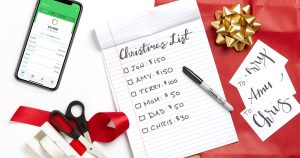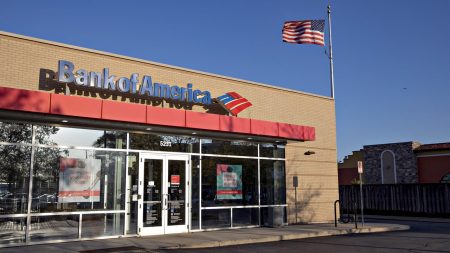Key takeaways
- There are six pharmacist loan forgiveness programs you may qualify for to help alleviate student loan debt.
- Depending on where you live and what program you qualify for, you may receive up to $100,000 in loan forgiveness.
- If you don’t qualify for pharmacist loan forgiveness, consider income-driven repayment or refinancing to help make your student loan debt more manageable.
Despite a pharmacy degree’s financial and professional rewards, getting one can be expensive. The average student loan debt for graduates, according to the American Association of Colleges of Pharmacy (AACP) in 2023, was $167,711. The median annual income for pharmacists is $136,050, according to the Bureau of Labor Statistics.
If you qualify for student loan forgiveness, costs become much more manageable. Whether you’re a new graduate or considering ways to afford pharmacy school, these pharmacist loan forgiveness programs are worth pursuing.
Can pharmacists get loan forgiveness?
Yes, there is loan forgiveness for pharmacists. Being in the medical industry gives pharmacy graduates loan forgiveness options that might not be available to the general public.
Most of these programs forgive only a portion of a student’s loan balance — and often, to qualify, you must keep making loan payments while working. In many cases, forgiveness is also limited to federal student loans.
6 student loan forgiveness programs for pharmacists
If you’re a pharmacist seeking student loan forgiveness, it’s worth learning more about the following programs to see if you qualify. Below are six student loan forgiveness programs you might consider applying for after graduation.
Public Service Loan Forgiveness (PSLF)
Public Service Loan Forgiveness, or PSLF, is one program that could help you pay off a large portion of your federal student loan debt. After you make payments on your student loans for 10 years (120 payments), you may be eligible for forgiveness of your remaining balance.
You might be eligible for PSLF as a pharmacist if you work at one of the following:
- Not-for-profit organization.
- Government organization (federal, state, local or tribal), including the military.
You also need to have Direct Loans to qualify for PSLF. However, you may be able to consolidate your federal student loans into a new Direct Loan if they don’t fall into that category already.
How to apply: Complete a PSLF application, have your employer sign it and submit the completed application to FedLoan Servicing.
State Loan Repayment Program (SLRP)
The National Health Service Corps State Loan Repayment Program, or SLRP, grants full or partial student loan forgiveness to students who work in a Health Professional Shortage Area (HPSA).
Program benefits and qualification requirements differ from state to state, so you’ll need to check with your state of residence or the state where you plan to live after graduation for more information.
Here are a few examples of the type of student loan forgiveness you might be able to qualify for under an SLRP program:
- Washington Health Corps: Pharmacists may qualify for up to $75,000 in student loan forgiveness in exchange for serving a two- to three-year term in an HPSA.
- Colorado Health Service Corps: Full-time clinical pharmacists (i.e., those with a Pharm.D degree) may qualify for up to $90,000 in student loan forgiveness after working for three years at a state-approved location.
- Oregon Partnership: Pharmacists who work in an approved HPSA may receive forgiveness for up to 50 percent of their qualifying education debt (dollar limits apply).
How to apply: Visit the Health Resources and Services Administration website to look up state loan repayment program options, eligibility requirements and application requirements for your state.
NHSC Loan Repayment Programs
In addition to SLRPs available through the National Health Services Corps, the organization also offers two other loan repayment programs that might work for pharmacists:
- NHSC Substance Use Disorder (SUD) Workforce Loan Repayment Program: Qualifying pharmacists may be eligible for up to $75,000 in loan repayment funds after working at least three years at an NHSC-approved substance disorder treatment facility.
- NHSC Rural Community Loan Repayment Program: Pharmacists may qualify for up to $100,000 in student loan repayment in exchange for a full-time commitment to work at least three years at a rural NHSC-approved substance disorder treatment facility.
How to apply: You can submit an application with the National Health Service Corps. Both of the programs above use the same application. However, you have to choose which program to apply for, as you can’t receive loan repayment benefits from both. There is also an additional $5,000 award for those fluent in Spanish to help address language access barriers in healthcare.
National Institutes of Health Loan Repayment Program
The National Institutes of Health Loan Repayment Program seeks to attract high-quality health care professionals to careers in biobehavioral and biomedical research. The programs also aim to entice medical research professionals to remain in those positions.
Eligible pharmacists in research positions may receive up to $50,000 per year of student loan repayment. You must commit to engaging in NIH “mission-relevant” research in return for this financial incentive.
How to apply: You can review the application requirements and apply for an NIH Loan Repayment Program via the National Institutes of Health website.
Indian Health Service Loan Repayment Program
Pharmacists who work at (or are interested in working at) a health facility that serves American Indian or Alaska Native communities may be eligible for partial or full student loan forgiveness through the Indian Health Service Loan Repayment Program. Up to $50,000 of initial loan repayment benefits are available to pharmacists and other healthcare professionals through the program.
You must make an initial two-year commitment to serve in a qualifying health facility to qualify. But you may be eligible to extend your contract beyond the first two years and qualify for more funding each year until you eliminate all your qualifying educational debt.
How to apply: You can fill out and submit your Loan Repayment Application online via the Indian Health Service website.
Health Resources and Services Administration Faculty Loan Repayment Program
If you come from a disadvantaged background (for economical or environmental reasons), you might be eligible for the Faculty Loan Repayment Program through the Bureau of Health Workforce. Eligible pharmacists who serve on the faculty at a school for health professionals can take advantage of this program.
You can receive up to $40,000 over two years in exchange for your commitment to teach. After the initial two-year commitment, you may be able to extend your contract.
How to apply: Visit the Health Resources and Services Administration website to apply via the Customer Service Portal.
What to do if you don’t qualify for pharmacist student loan forgiveness
As helpful as student loan forgiveness programs can be, they’re not available to everyone. If you cannot qualify for student loan forgiveness, here are some other options that could help you manage your pharmacy school debt.
Income-driven repayment
For federal student loans, an income-driven repayment plan could help you reduce the cost of your monthly payments. These plans use your income and family size to determine your monthly payments — usually 10 or 15 percent of your discretionary income.
Most income-driven repayment plans last for 20 or 25 years. Once the plan ends, the U.S. Department of Education may forgive any remaining loan balance.
Refinancing
Depending on your loan details, refinancing your student loans might save you money every month or over time. If you have a good credit score, you may qualify for a lower interest rate, or you could refinance into a longer term to get a lower monthly payment.
It’s important to note that you can only refinance your student loans with a private lender; if you refinance federal student loans, you’ll have to sacrifice some benefits to take advantage of a potentially lower interest rate.
Bottom line
While the cost of attending pharmacy school is steep compared to some other areas of study, there are loan forgiveness options that can help to offset the debt burden. For graduates with some flexibility in the job market, exploring these avenues can shorten repayment terms and save significant money throughout repayment.
Read the full article here












